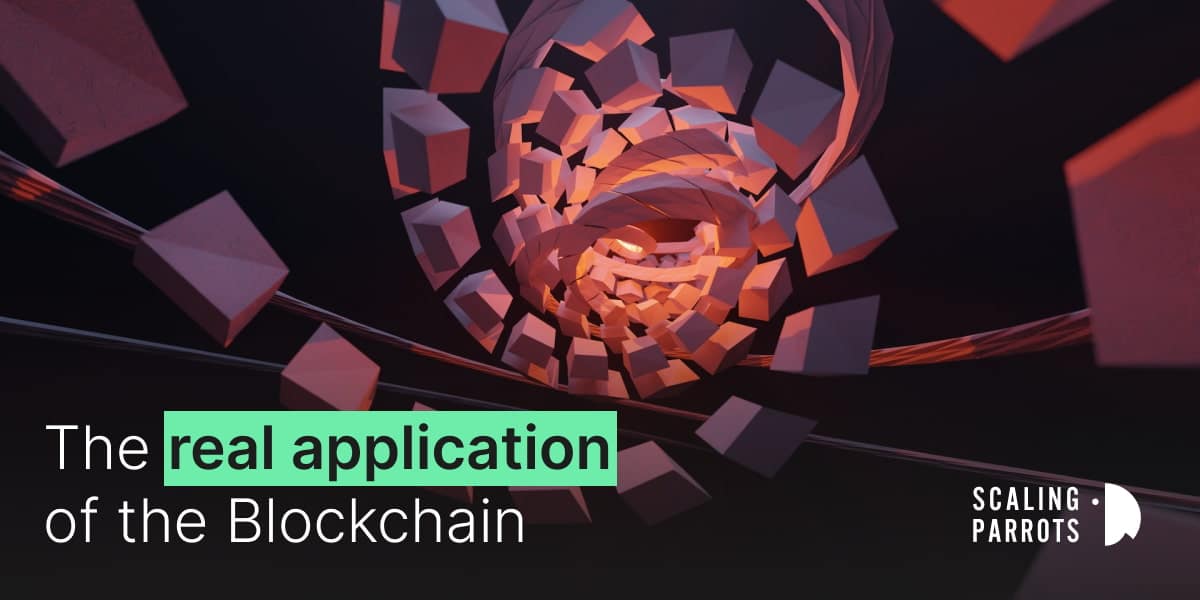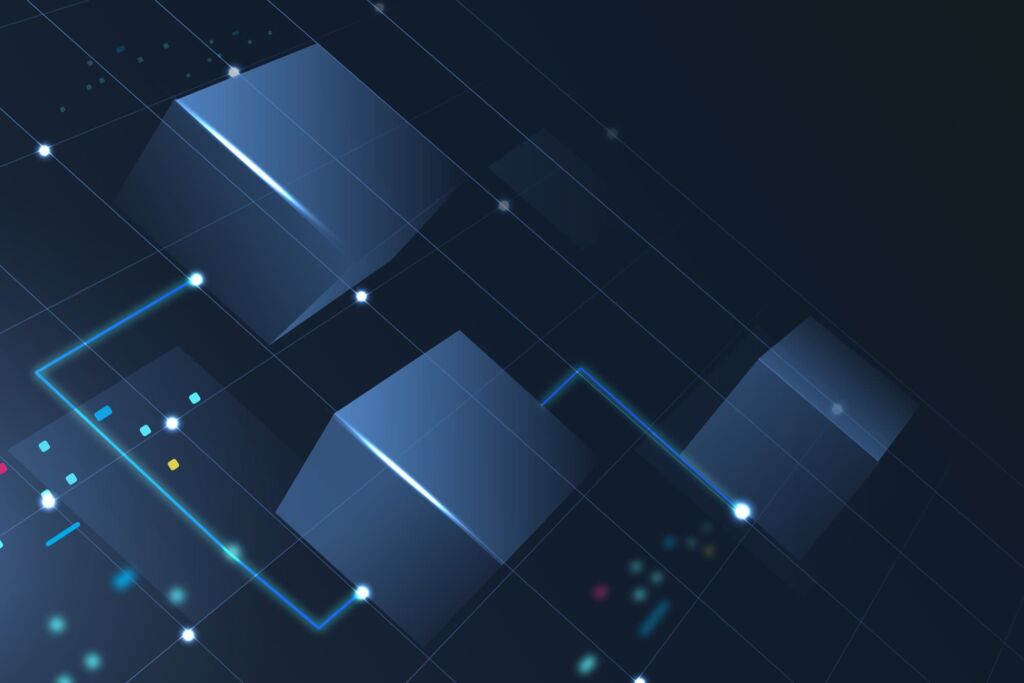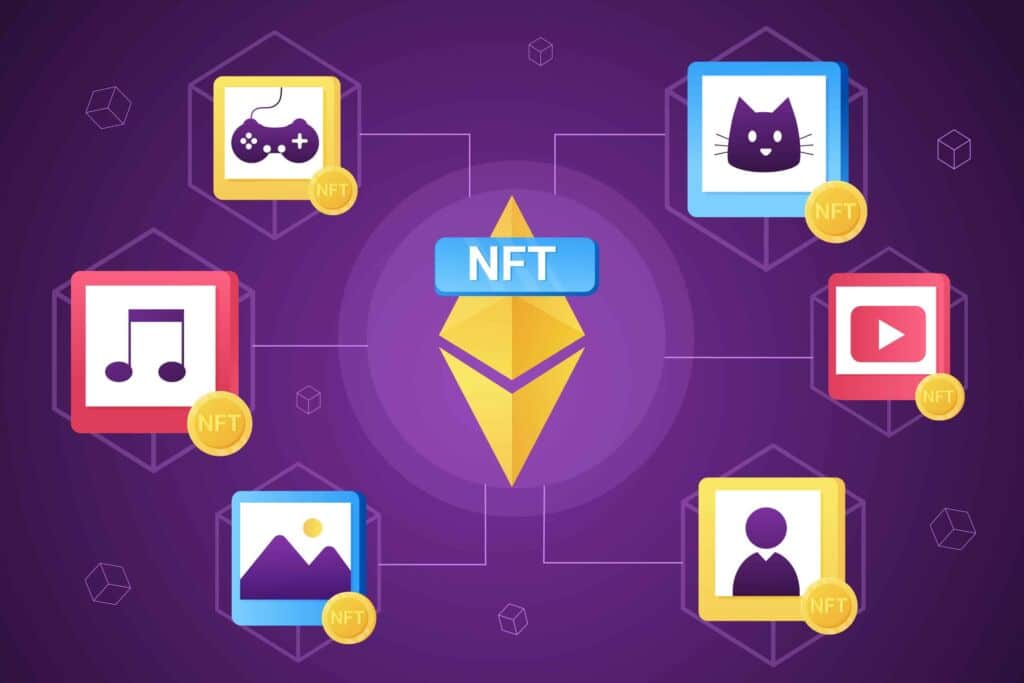
As you are probably aware, Blockchain is the most talked about technology. It is also the one with the highest expectations: It is expected to cause a significant transformation in our lives, equivalent to the first introduction of the internet.
Blockchain was initially developed to support Bitcoin (CRYPTO: BTC). Satoshi Nakamoto invented an immutable record of transactions that binds together data blocks using digital encryption to solve the problems of double-spending associated with digital currency.
Blockchain’s popularity and rising industrial uses are exploding due to its inherent properties – the decentralized and distributed ledger is unchangeable and entirely transparent. A centralized authority is not required to operate a Blockchain network.
All network peers verify the information contained in the Blockchain ledger. The bottom line is that it is very safe and dependable, with few points of entry for attackers.
Essentially, Blockchain technology’s characteristics make it one of the most transformative technical instruments of the twenty-first century. As a tamper-proof ledger, Blockchain technology has several potential applications for enterprises across all industries.
With the relevancy of Blockchain technology to our current activities today, what are some of its use cases in the market? This article will discuss 10 Blockchain use cases in the market and its benefit.
But before we look at the use cases of Blockchain, let’s discuss what Blockchains are and how it works.
What is Blockchain
Blockchain is a distributed, immutable ledger that simplifies the recording of transactions and the tracking of assets in a business network. A tangible asset (a home, vehicle, cash, or land) can be intangible (intellectual property, patents, copyrights, branding).
A Blockchain network can monitor and sell nearly anything of value, reducing risk and cost for all parties involved. A Blockchain is a decentralized database made up of a series of blocks that contain data and are secured by strong encryption.
“Decentralized” indicates that information is disseminated throughout a network rather than kept in a traditional database and is not managed or controllable by a single person or entity.
Therefore, it improves system security since there is no one list of data that may be compromised. Furthermore, as an added security measure, any block update must be permitted with the “permission” of at least 51% of the network.
The blocks can include not just data but also programs (so-called “smart contracts”), allowing for process automation and creating a system in which transparency, cooperation, and integrity are inherent in the technology rather than dependent on third parties.
Information is the lifeblood of business. The sooner and more precise it is received, the better. Blockchain is great for delivering such information because it delivers instantaneous, shareable, and entirely transparent data recorded on an immutable ledger that network users with permission can only view.
A Blockchain network can monitor orders, payments, accounts, and production, among other things. And, since members have a unified perspective of the truth, you can see all aspects of a transaction from start to finish, offering you greater confidence and new efficiencies and possibilities.
How does Blockchain work?
To better understand the definition, meaning, and functioning of Blockchain technology, We may compare Blockchain technology to the traditional financial system.
Blockchain may be considered a comprehensive history of financial transactions in this context, with blocks serving as individual account statements. Bitcoin transactions, like financial transactions, are incorporated into the system chronologically.
The Blockchain has no transaction fees (you may charge whatever you want without worrying about third parties hurting your profitability) but just infrastructure.
It works like this: a transaction component commences the process by constructing a block, and anybody can produce a data block. This block is validated and certified by hundreds, if not millions, of computers spread over the network and is thus added to the chain indefinitely.
When one block is completed, another is generated, culminating in an exponential increase in the number of blocks. All information is mathematically encrypted, making any effort at fraud or fabrication extremely impossible.
There is also no need for middlemen because all transactions are conducted between individuals, and there is no central decision-making power because every user has a voice that matters.

Key elements of a Blockchain
Distributed ledger technology
The distributed ledger and its immutable record of transactions are accessible to all network members. Transactions are recorded just once with this shared ledger, reducing the duplication of effort common in traditional commercial networks.
Immutable records
After a transaction has been logged into the shared ledger, no participant may edit or tamper with it. If a mistake is found in a transaction record, a new transaction must be entered to correct the issue, and both transactions are then visible.
Smart Contracts
A set of rules, known as a smart contract, is recorded on the Blockchain and implemented automatically to speed up transactions. A smart contract can specify the parameters for corporate bond transfers, the payment of trip insurance, and much more.
How secure is Blockchain?
While no system is immune to hacking, according to Alex Tapscott, CEO and founder of Northwest Passage Ventures, a venture capital firm that invests in Blockchain technology businesses, the basic architecture of Blockchain is the safest today.
The computing resources for most Blockchains are enormous because it’s not just a computer but many. For example, the bitcoin Blockchain leverages between 10 and 100 times the computing power of all Google serving farms combined.
The calculations needed to validate transactions and produce a new block to join the Blockchain can be speeded up thanks to accelerated graphics cards (GPUs). This has contributed in recent months to extreme demand for this type of component, which has caused prices to soar.
Blockchain technology solves the “trust” problem by creating what, in jargon, is called a “trustless” system. This means that, in transactions between two people, a neutral third party (for example, a bank) is no longer needed to guarantee everything goes well: the system can guarantee this with its own algorithms. This is what made it ideal for creating cryptocurrencies, such as Bitcoin.
10 use cases of Blockchain in the market
The following are some use cases of Blockchain in the markets
- Health
Blockchain database design is ideal for storing personal health details. Users may obtain a permanent archive of their health records from any location with an internet connection. They may grant physicians and insurance firms access through easy online transactions, and doctors with the necessary rights can add new data to records. Blockchain technology has the potential to transform healthcare by providing people with total ownership over their medical information. Increased efficiency in paying for healthcare services is a bonus. To summarize:- In hospitals, there will be more efficient data management.
- Patients will be given consent management of the use of health data and more control and protection of personal health data.
- Pharmaceutical companies will be helped to tackle a major problem such as counterfeiting and improve the monitoring of drugs sold.
- Entertainment
Blockchain technology can help solve problems related to the music industry, from piracy to copyright management to artists’ payments. Artists can use it to share their music online, get paid directly, and solve licensing and copyright problems without relying on record companies. Artists, musicians, and sports teams were among the first to understand the potential of NFTs to increase fan engagement. A growing number of Blockchain-based platforms allow fans and enthusiasts to purchase collectible NFTs that support the team or artist, allowing them to vote on the team’s anthem choice or take advantage of special seats at events. - Supply chain management
Manufacturers, retailers, and customers are all interested in tracking the supply chain from raw materials to the consumer’s basket. Blockchains can be essential in monitoring items along their long journey from production to consumption, validating that meals are free of inorganic toxins, or ensuring that import taxes are correctly paid at international crossings. Not for nothing does the Walmart hypermarket network follow the supply chain of food supplied in its locations using Blockchain. - Real estate
Whether it’s maintaining a database of real estate and land, managing home sales without the time and cost of security deposits, or minimizing the paperwork needed to buy a property, Blockchain has what it takes to play a significant role in real estate. The transparency of Blockchain technology would allow for recording, monitoring, transferring, and verifying documents such as property deeds in a much easier way. This will solve the problems associated with buying and selling real estate, especially those related to possible fraud and errors in public records. - Money transfer
Blockchain technology offers real-time transactions that are incredibly quick. This has already had a long-term impact on the BFSI sector since it saves both time and money (primarily by eliminating transaction fees imposed by banks/financial institutions). This is especially true for cross-border transactions, which are generally time-consuming and costly. Even in today’s modern banking system in the United States, money transfers between accounts might take days, but a Blockchain transaction takes minutes. The best Blockchain technology use cases include money transfer and payment processing. - Energy
According to PWC, Blockchain technology may be utilized to conduct energy supply transactions and offer the foundation for metering, invoicing, and clearing operations. Other possible uses include asset management, ownership documentation, origin assurances, emission permits, and renewable energy certifications. The energy market is likewise highly organized; all energy transactions must go via trustees and third parties. As a result, the buyer will always spend more. So, Transactive Grid, a New York business that recognized the inefficiencies of the service, employed the Ethereum-based Blockchain to provide a lot more comfortable service to its consumers. That is, to conduct transactions on decentralized power generation networks without going via international corporations. Users can create, purchase, and sell power with complete autonomy by freely trading it with their neighbors. - Insurance settlements
Blockchain-based applications can eliminate fraud risks while accelerating claims in the insurance industry. Immutable records of an asset’s value, claims, and reimbursements give the insurance industry easy access to all the necessary information. In addition, smart contracts can reduce much of the bureaucratic burden involved in processing insurance reimbursements. - Gaming
In the world of video games and online gambling, Blockchain technology can provide a record that ensures the randomness of dice rolls, poker hands, and gaming events. The Blockchain can record players’ strengths in role-playing games and winnings in gambling. Blockchain technology can also serve as the basis for in-game purchases, upgrades, customizations, and other features, which can be implemented as Blockchain-based non-fungible tokens. Several companies are leveraging Blockchain technology to create early versions of metaverse-like game universes. - Blockchain voting
Blockchain voting is an excellent use of Blockchain technology to meet an existing need. Cryptographic protection ensures voter identity verification while using Blockchain to vote. The Blockchain network can monitor votes, count votes, and assure the outcome’s integrity. Blockchain technology ensures that no one votes twice, that only eligible voters may vote, and that votes cannot be tampered with. Furthermore, it has the potential to expand voting access by making it as simple as touching a few buttons on your smartphone. At the same time, the expense of holding an election would be significantly reduced. - Data storage
The use of Blockchain technology in a data storage system can improve security and integrity. Because data may be maintained decentralized, hacking into the network and erasing all data will be more difficult. On the other hand, a centralized data storage provider may only have a few sites of redundancy. It also implies that data is more accessible because it isn’t always reliant on the operations of a particular entity. In some cases, using Blockchain for data storage may be less expensive. It also offers cloud storage: Blockchain is useful for storing enormous amounts of data at a minimal cost. You take all of the information, encrypt it, and securely store it in little chunks on all of the network’s machines.

Conclusion
In conclusion, the uses of Blockchain can not be overemphasized, as we have day to day need for Blockchain in all aspects of the field. We have therefore understood that Blockchain is a revolutionary technology that is already improving and will improve the effectiveness of centralized and monopolized sectors, decentralizing them.
See you soon,
Scaling Parrots
